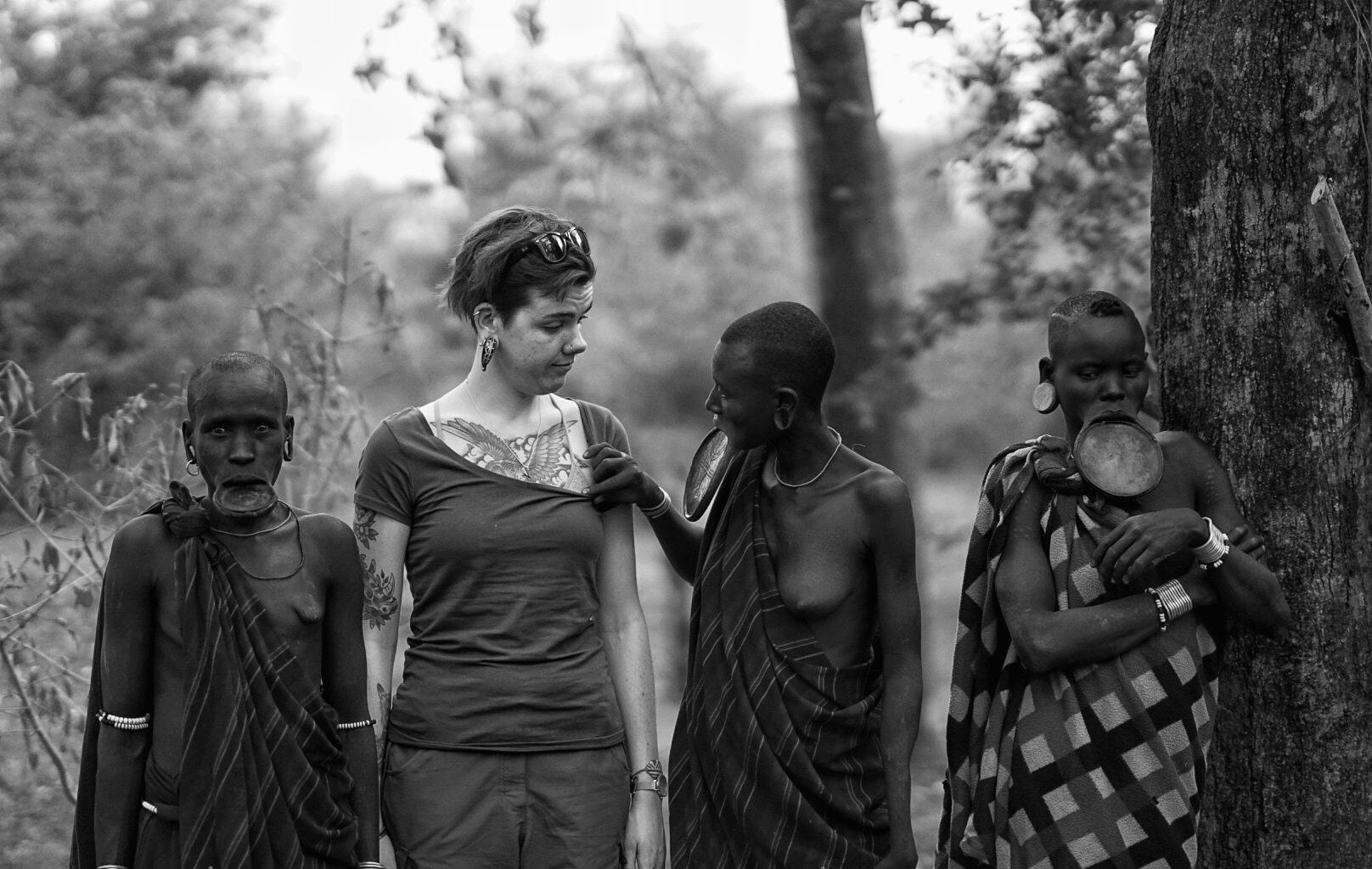Usually with head down, typing at the speed of 1,000 Thompsons gazelles, with phone at the ear, negotiating her way around the logistics of transporting guests to and from the far reaches of Africa, I finally had the chance to catch up with none other than our logistician extraordinaire, Frankie McCarthy, after her trip to Ethiopia, which was a year ago. She was guided by Lale Biwa.
I was particularly keen to hear about her time in the Omo Valley, an area in the south of Ethiopia. I often hear parts of Ethiopia described as like ‘something out of the old testament’ or ‘the time of Abraham and Lot’. Go to the north country, to Lalibela and Tigray, and this is what you’ll find. However, I can assure you that the feeling of the Omo far pre-dates that of the Bible. Sometimes called the birthplace of mankind, due to it being the site of the earliest Homo sapiens fossil found by Dr. Richard Leakey’s team, the area around the Omo is made up of more than 20 different tribes.
I know that Frankie’s time had struck a chord deep within that continues to resonate, so was intrigued to know about which parts had remained with her, particularly memories from the Mursi camp. ‘We were here for two nights. The Mursi are quite hard-faced and stern – you don’t really see them sharing that much affection or even smiles. This isn’t helped by the fact that any respectable member of the community has an AK-47, which is used as a symbol of status. As soon as we arrived though, these two girls became obsessed with my tattoos and piercings. They have their own kind of tattoos and piercings, which is why they were so interested in me. Lale told me they hadn’t ever seen someone like that before.’
Lale, a member of the Kara tribe, who is also Wild Expeditions’s southern manager, went on to explain to Frankie the method of scarification, a process leaving raised scars forming intricate patterns over the skin.
‘He told me they take razorblades to make incisions in their skin and then they rub dirt in them, which eventually makes it get infected and then as it heals, it raises to make a lump in their skin. They do this all over their body.’ The Mursi are also famous for their lip plates – you may have seen them in pictures and not realised. ‘The way this is done is by knocking the bottom front four teeth out and then cutting the webbing of their mouth to allow the lip plate – which is made out of clay and dried in the sun – to lay flat before making the full incision in their mouth.’
‘So I made a trade with the two girls. I gave them my ear flesh tunnels and they gave me a lip plate. I get really emotional talking about it, because it was such an incredibly rare moment of the Mursi showing their gentle side – and to a white westerner. I felt honoured.’
Unfortunately, some types of tourism have had a negative affect on the area. A lot of people travel to the Omo with the expectation of taking something away, usually a picture. The trouble with this, as Frankie says, is all personal, emotional connection is gone as so many people end up observing behind the lens of their camera and, in the end, not necessarily gaining anything more than someone watching the National Geographic channel on their sofa at home.
‘Something that really saddens me is seeing large groups of tourists coming into these kinds of areas, with about 20 people crowding around somebody with a lip plate taking pictures, when they’re just trying to get on with their lives. Much more human is sitting down and sharing a mutually agreed time together.’ The above picture of Frankie with Mursi women is one of my absolute favourites, not only because it’s beautifully balanced, but because the voyeuristic role she describes is switched and, for a fleeting second, the tourist becomes the attraction.
In an attempt to reconnect guests with what has the potential to be a deeply moving experience, our Conservation Journeys to visit the Mursi are, as of the this year, camera free. In doing so, we take the pressure off anyone who’s visiting to take photos. Instead of being behind a lens and trying to record something for the future, camera free environments allow for an exploration of the now, of the experience as it takes place, and of relationships between cultures whose commonalities, as Frankie’s own experience shows, are many.
For more information, please get in touch with Frankie or one of our other destination specialists, who would love to talk through the potential of visiting the Mursi.
